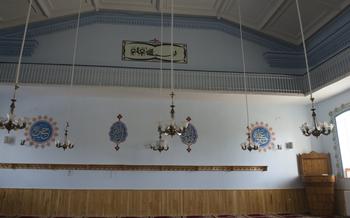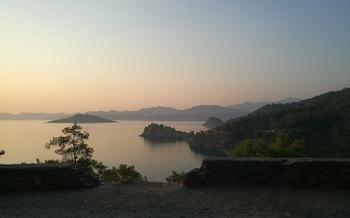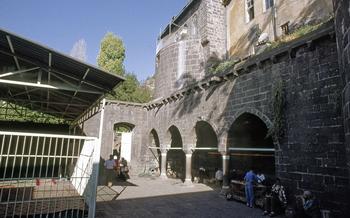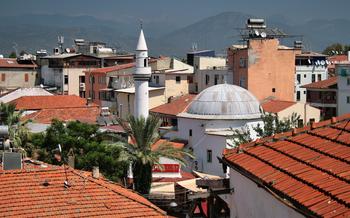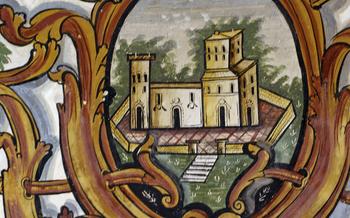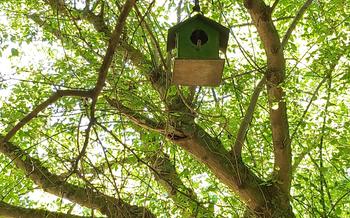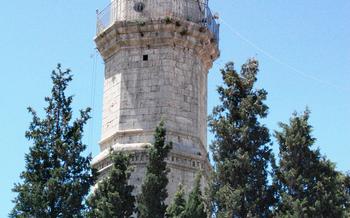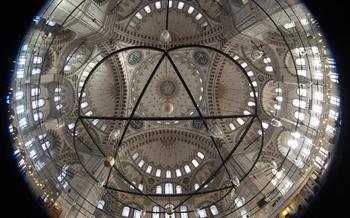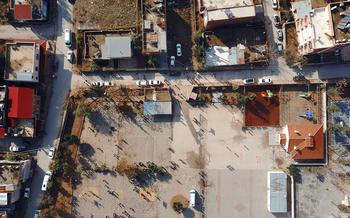
Minare Mosque
- Historical Significance
- Architectural Masterpiece
- Visiting the Mosque
- Exploring the Interior
- Local Customs and Traditions
- Call to Prayer: A Soul-Stirring Experience
- Guided Tours
- Photography Tips
- Local Cuisine
- Exploring Fethiye: A World of Wonders Beyond the Minare Mosque
- Respectful Behavior
- Local Festivals
- Nearby Attractions: Exploring Hidden Gems
- Insider Tip: Unveiling the Hidden Gem
Historical Significance
The Minare Mosque, also known as the Great Mosque of Fethiye, stands as a testament to the rich history and cultural significance of the region. Built in the 13th century during the reign of the Anatolian Seljuk Sultanate, the mosque has played a pivotal role in the development of Islamic architecture and remains a revered pilgrimage site for Muslims worldwide. Its architectural style, blending Seljuk and Ottoman influences, showcases the evolution of Islamic design over centuries. The mosque's intricate carvings and decorations, inspired by both Turkish and Islamic traditions, reflect the cultural and religious influences that have shaped the region's history. The Minare Mosque serves as a tangible reminder of the region's diverse heritage and the enduring legacy of the Seljuk and Ottoman empires.
Architectural Masterpiece
The Minare Mosque stands as a testament to the architectural prowess of the Ottoman Empire. Its towering minarets, adorned with intricate tilework and delicate balconies, pierce the sky, guiding the faithful to the house of God. The mosque's domes, reminiscent of celestial orbs, are a symbol of divine protection and grandeur.
Step inside the mosque, and you will be awestruck by the harmonious blend of Islamic and Byzantine architectural elements. The courtyard, surrounded by elegant arches and slender columns, creates a serene and inviting space for contemplation and prayer. The interior of the mosque is a symphony of colors and patterns, with vibrant tiles adorning the walls and intricate calligraphy gracing the mihrab and minbar.
The mosque's design is a testament to the skill and craftsmanship of the artisans who labored tirelessly to create this architectural masterpiece. Every detail, from the intricate carvings on the doors to the stained-glass windows that filter the sunlight, speaks to the artistry and devotion of its creators.
Visiting the Mosque
Visiting the Minare Mosque is a unique and awe-inspiring experience that welcomes people of all faiths. To ensure a respectful and enriching visit, it's important to adhere to certain guidelines and etiquette.
Visiting Hours and Dress Code:
The mosque is open to visitors daily, except during prayer times. It's advisable to check the mosque's official website or inquire locally for specific visiting hours. When entering the mosque, non-Muslim visitors are required to dress modestly, covering their shoulders and knees. Women may also be asked to cover their hair as a sign of respect.
Etiquette for Non-Muslim Visitors:
Upon entering the mosque, visitors are expected to remove their shoes and place them in the designated racks. It's considered disrespectful to walk inside the mosque with shoes on. Visitors should also avoid loud conversations, talking on mobile phones, and taking photographs during prayers.
Best Time to Visit:
To avoid crowds and enjoy a more serene atmosphere, it's recommended to visit the mosque early in the morning or late in the afternoon. During these times, you'll have more opportunities to explore the mosque's intricate details and soak in its spiritual ambiance without distractions.
Exploring the Interior
Stepping inside the Minare Mosque, visitors are enveloped in a sense of serenity and spirituality. The interior is adorned with intricate tilework, calligraphy, and stained-glass windows, creating a breathtaking visual display. The tiles, in vibrant hues of blue, green, and turquoise, depict intricate geometric patterns and verses from the Quran. The calligraphy, rendered in elegant Arabic script, adorns the walls and arches, adding to the mosque's aesthetic appeal. The stained-glass windows, with their vibrant colors and intricate designs, filter the sunlight, casting a warm and ethereal glow onto the interior.
At the heart of the mosque is the qibla, the direction facing Mecca towards which Muslims pray. The qibla wall is marked by a mihrab, a niche that indicates the direction of prayer. The mihrab is intricately carved with geometric patterns and verses from the Quran, emphasizing its significance. Next to the mihrab is the minbar, a raised platform from which the imam delivers sermons during Friday prayers. The minbar is often elaborately decorated with carvings and inscriptions, reflecting its importance in Islamic worship.
Local Customs and Traditions
The Minare Mosque is deeply embedded in the cultural fabric of Fethiye, serving as a spiritual and social hub for the local community. Visitors to the mosque can witness firsthand the cultural customs and traditions that revolve around this sacred site.
During the holy month of Ramadan, the mosque becomes even more vibrant, with extended prayer sessions, communal iftars (breaking of the fast), and special religious ceremonies. The mosque's courtyard transforms into a lively gathering space, where locals of all ages come together to share meals, socialize, and celebrate the spirit of Ramadan.
One of the most notable customs associated with the Minare Mosque is the tradition of shoe removal before entering the prayer hall. This practice signifies respect for the sanctity of the space and is observed by both Muslim and non-Muslim visitors alike.
Another significant tradition is the recitation of the adhan, the Islamic call to prayer, which echoes through the streets of Fethiye five times a day. The melodious chanting of the muezzin, or caller to prayer, is a reminder of the mosque's central role in the daily lives of the local Muslim community.
Visitors to the mosque are encouraged to observe local customs and traditions with respect and sensitivity. Dressing modestly, maintaining a respectful demeanor, and avoiding disruptive behavior are essential for creating a harmonious and welcoming environment for all.
Call to Prayer: A Soul-Stirring Experience
The call to prayer, or adhan, is an integral part of Islamic culture and a defining feature of the Minare Mosque. Five times a day, the muezzin's melodious voice reverberates through the air from the mosque's minarets, summoning the faithful to prayer. The adhan is not merely a call to worship; it is a spiritual and cultural expression that encapsulates the essence of Islamic devotion.
As the muezzin's voice echoes through the streets of Fethiye, a sense of tranquility and serenity washes over the city. The rhythmic chanting, with its distinct Arabic phrases, creates a powerful and moving experience for both Muslims and non-Muslims alike. The adhan serves as a reminder of the importance of prayer and the connection between the individual and the divine.
I remember my first experience hearing the adhan in Fethiye. I was captivated by the beauty and power of the muezzin's voice, and I couldn't help but feel a sense of awe and reverence. The adhan transported me to another realm, reminding me of the spiritual significance of this place. It was a moment that I will never forget.
Guided Tours
To fully appreciate the historical, architectural, and cultural significance of the Minare Mosque, consider booking a guided tour. A knowledgeable guide can provide valuable insights, share fascinating stories, and answer your questions about the mosque. Guided tours typically cover the history of the mosque, its architectural features, the significance of its interior elements, and the role it plays in the local community. By opting for a guided tour, you'll gain a deeper understanding of the mosque and its importance, making your visit even more memorable.
I had the opportunity to experience a guided tour of the Minare Mosque, and it was an incredibly enriching experience. Our guide, a local historian, shared captivating stories about the mosque's construction, its role in the development of Islamic architecture, and the cultural traditions associated with it. He pointed out intricate details that I would have missed on my own, such as the symbolism behind the tilework and the significance of the calligraphy inscriptions. The tour provided me with a comprehensive understanding of the mosque and left me with a profound appreciation for its beauty and spirituality.
Photography Tips
Capturing the beauty of the Minare Mosque through photography can be a rewarding experience. Here are some tips to help you take stunning photographs:
-
Golden Hour Magic: Visit the mosque during the golden hours, around sunrise or sunset, when the warm light illuminates the mosque's exterior, creating a magical ambiance.
-
Framing the Minarets: Position yourself strategically to capture the iconic minarets against the backdrop of the blue sky. Experiment with different angles to create dynamic compositions.
-
Interior Details: Explore the mosque's interior and focus on the intricate tilework, calligraphy, and stained-glass windows. These details add depth and character to your photographs.
-
Symmetry and Patterns: Pay attention to the symmetrical elements and patterns in the mosque's architecture. These elements can create visually appealing and balanced compositions.
-
People and Activity: Include people in your shots to convey a sense of scale and human presence. Capturing the mosque's visitors engaged in prayer or contemplation can add a touch of authenticity.
-
Play with Reflections: If there are water features or reflective surfaces near the mosque, use them to your advantage. Reflections can create interesting and artistic compositions.
-
Experiment with Perspectives: Try different perspectives, such as shooting from a low angle to emphasize the grandeur of the minarets or from a high vantage point to capture the mosque's relationship to its surroundings.
-
Storytelling through Photos: Think about the story you want to tell with your photographs. Whether it's the mosque's architectural beauty, the spiritual atmosphere, or the people who visit it, let your images convey a narrative.
Local Cuisine
Fethiye offers a culinary adventure that will tantalize your taste buds. After exploring the spiritual essence of the Minare Mosque, indulge in the delightful flavors of Turkish cuisine at one of the many nearby restaurants. Savor the smoky aromas of grilled kebabs, seasoned with aromatic spices and herbs. Experience the melt-in-your-mouth texture of freshly baked pide, topped with succulent fillings. Don't miss the traditional Turkish breakfast, a feast of fresh cheeses, olives, honey, and the ever-present çay (Turkish tea). For a unique dining experience, venture into the charming backstreets and discover hidden gems where locals gather to enjoy authentic Turkish dishes. Immerse yourself in the vibrant flavors and aromas of Fethiye's culinary scene, and let your taste buds embark on a journey of culinary delight.
Exploring Fethiye: A World of Wonders Beyond the Minare Mosque
While the Minare Mosque stands as the crown jewel of Fethiye's spiritual and cultural heritage, the city offers a myriad of other captivating attractions that beckon visitors to explore its diverse tapestry.
-
Ölüdeniz Blue Lagoon: Immerse yourself in the pristine turquoise waters of the Blue Lagoon, renowned for its breathtaking beauty and ideal conditions for swimming, sunbathing, and water sports.
-
Saklıkent Gorge: Embark on an adventurous trek through the majestic Saklıkent Gorge, Turkey's second-longest canyon, where towering cliffs and cascading waterfalls create a breathtaking natural spectacle.
-
Tlos Ancient City: Delve into the rich history of the ancient Lycian civilization at the ruins of Tlos, where remnants of temples, theaters, and tombs offer a glimpse into a bygone era.
-
Fethiye Museum: Discover the region's cultural heritage at the Fethiye Museum, housing an impressive collection of artifacts from various civilizations that have graced this land.
-
Babadağ Mountain: Experience the thrill of paragliding from the summit of Babadağ Mountain, soaring high above the stunning landscapes of Fethiye and the Mediterranean Sea.
With its captivating blend of natural wonders, historical treasures, and cultural experiences, Fethiye promises an unforgettable adventure for every traveler who ventures beyond the Minare Mosque.
Respectful Behavior
When visiting the Minare Mosque, it is essential to be mindful of local customs and traditions to ensure a respectful and harmonious experience for all. As a non-Muslim visitor, dressing modestly is recommended, with shoulders and knees covered. Removing shoes before entering the mosque is a sign of respect, and visitors should refrain from talking loudly or engaging in disruptive behavior.
It is important to remember that the mosque is an active place of worship, and visitors should be mindful of ongoing religious activities. Taking photographs inside the mosque is generally permitted, but it's essential to be discreet and avoid disturbing worshippers.
By respecting local customs and traditions, visitors can contribute to the preservation of the mosque's sacred atmosphere and ensure a positive experience for everyone. A simple gesture of respect can go a long way in fostering understanding and appreciation between different cultures.
Local Festivals
While your visit to the Minare Mosque may be primarily focused on its religious and historical significance, it's important to note that the mosque also plays a vital role in the local community and is associated with several cultural festivals and events throughout the year.
One of the most notable festivals is the annual Mevlid-i Nebi, which celebrates the birth of Prophet Muhammad. During this festival, the mosque becomes a hub of activity, with special prayers, recitations, and gatherings held within its premises. Visitors can witness the vibrant atmosphere and participate in the festivities, gaining a deeper understanding of Islamic traditions and culture.
Another significant event is the Hıdırellez festival, which marks the arrival of spring and is celebrated with great enthusiasm in Fethiye. During this festival, locals gather at the mosque and its surroundings for picnics, traditional music performances, and various games and activities. If your visit coincides with this festival, be sure to join in the celebrations and experience the joyous spirit of the local community.
These festivals provide a unique opportunity to immerse yourself in the cultural heritage of Fethiye and gain a deeper appreciation for the role of the Minare Mosque in the lives of its people.
Nearby Attractions: Exploring Hidden Gems
In the vicinity of the Minare Mosque, visitors can embark on a journey to uncover hidden gems and explore other captivating landmarks. A short stroll leads to the Fethiye Museum, which houses an impressive collection of artifacts that narrate the rich history and cultural heritage of the region. Delve into the past as you admire ancient pottery, intricate jewelry, and fascinating relics that bring the stories of bygone eras to life.
For those seeking a respite from the bustling city, a picturesque coastal path beckons just a few steps away from the mosque. Embark on a leisurely walk along the enchanting Fethiye Promenade, where the turquoise waters of the Mediterranean Sea shimmer and dance in the sunlight. Admire the panoramic views of the harbor, dotted with colorful fishing boats and majestic yachts, as you breathe in the invigorating sea breeze.
History buffs will delight in exploring the Fethiye Castle, a majestic fortress that stands as a testament to the city's resilience and strategic importance throughout the centuries. Perambulate along its ancient ramparts, marvel at the intricate fortifications, and immerse yourself in the tales of battles and conquests that have shaped the castle's storied past.
Insider Tip: Unveiling the Hidden Gem
As you explore the Minare Mosque, take a moment to venture beyond the main prayer hall and discover a hidden gem tucked away within the mosque's courtyard. Look for a small, unassuming door that leads to a serene and secluded garden, a tranquil oasis amidst the bustling city. This hidden garden, often overlooked by visitors, offers a peaceful retreat where you can escape the crowds and immerse yourself in the tranquility of the mosque's surroundings. Take a moment to sit on one of the benches beneath the shade of the trees, reflect on your visit, and soak in the spiritual ambiance of this sacred space.
